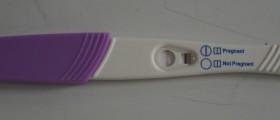
You have probably read many blogs about women that are trying to conceive, one of the most common ways you will notice the luteal phase is referred to is as DPO or days past ovulation. Right before the luteal phase begins, a woman's basal body temperature will increase because it will help provide a healthy environment for the fertilized egg. The uterus will undergo changes and the lining will thicken and be prepared for implantation and pregnancy. At the start of the menstrual period, a woman's body begins to manufacture follicle stimulating hormone or FSH. The hormone helps in the formation of a follicle on the end of the ovary, the follicle houses and nurtures the egg and when mature, a surge of luteinizing hormone or LH will cause the follicle to rupture and the egg to be released. Once the egg has been expelled, the follicle becomes the corpus luteum, which is responsible for producing progesterone which is necessary to sustain a pregnancy.
During the luteal phase, the corpus luteum will keep making progesterone for about 12-days which is to help the fertilized egg implant into the uterus. When a woman has a luteal phase defect, the condition will commonly can lead to infertility. A luteal phase defect can either be too short or too long in length and as a result, the woman will need to track basal body temperature changes, and the days between the menstrual cycle and ovulation in order to predict when she will be the most fertile. A luteal phase length calculator can be found online and can be another way to determine a woman's fertile period. A luteal phase length calculator can take the guess work out of tracking and help a woman get a more accurate idea of when she ovulates. Luteal phase defects do not have to rob a woman of her desire to have a baby, with tracking and using a calculator, it can take the mystery out of ovulation and make conceiving a baby much easier.














Your thoughts on this
Loading...